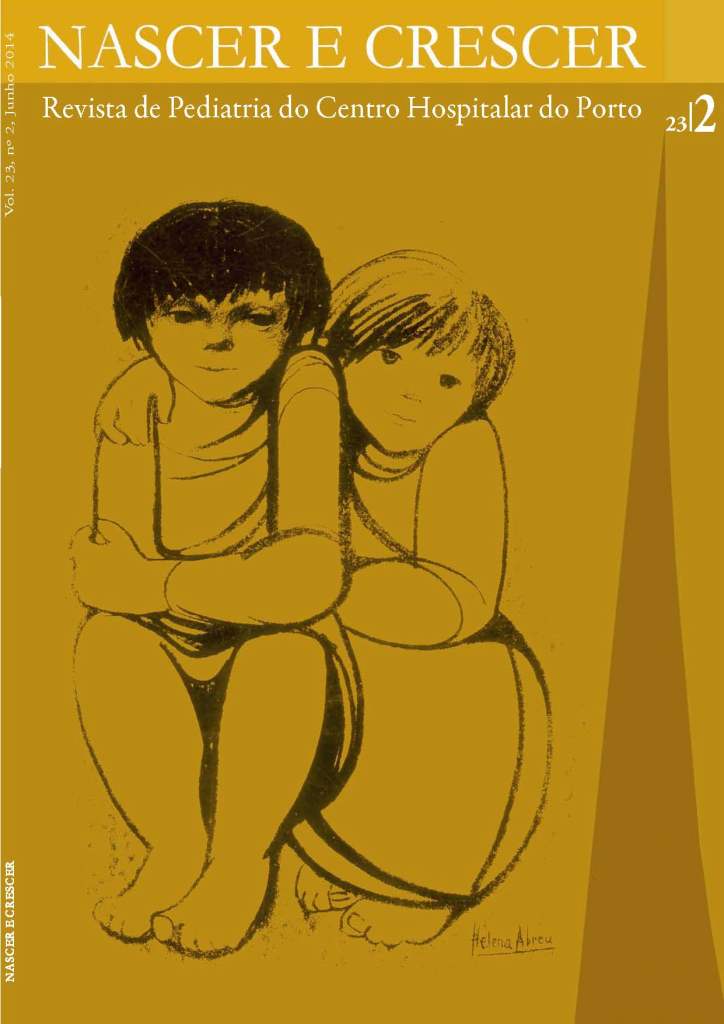Multidisciplinary approach and quality of life in patients with spina bifida
DOI:
https://doi.org/10.25753/BirthGrowthMJ.v23.i2.8597Keywords:
Multidisciplinary approach, quality of life spina bifidaAbstract
Introduction: Spina Bifida is the most common neural tube defect. Multidisciplinary approach has long been advocated as the optimal way to provide care for these patients.
Aim: To characterize the population of children followed in Spina Bifida clinic. To measure health-related quality of the life of children, adolescents and care givers. To correlate quality of life with some studied variables.
Methods: Retrospective study that included children followed in Spina Bifida clinic. The variables analyzed were: regarding the type of neural tube defect, bladder-sphincter system and functional level. The quality of life was assessed through the application of the questionnaire Child Health Questionnaire-Parental Form (CHQ – PF50). The statistical analysis was made with SPSS, version 17.
Results: The study included 69 children. Patients had a mean age of 13 years, 52.2% male, 86% had a diagnosis of myelomeningocele, 56.5% had independent gait and 30.4% were incontinent and used a diaper. The quality of life questionnaire was completed by 31 parents. All scores were greater than 50, the lowest value in patients was physical function and in parents was emotional impact. We found a statistically signifi cant correlation between functional capacity and physical functioning score on quality of life scale (r = 0.456, p = 0.01).
Conclusion: Clinical manifestations and complications of this condition can interfere significantly in the various components of patients’ and families’ quality of life. This study emphasizes the importance of assessment and measurement of needs in children with disabilities in order to promote their physical, psychological and social well-being.
Downloads
References
Detrait ER, George TM, Etchevers HC, Gilbert JR, Vekemans M, Speer MC. Human neural tube defects: developmental biology, epidemiology and genetics. Neurotoxicol Teratol 2005; 27:515-24.
Cunha C, Fontana T, Garcias G, Martino-Roth M. Fatores genéticos e ambientais associados a espinha bífi da. Rev Bras Ginecol Obstet 2005; 27:268-74.
EUROCAT: World atlas of birth defects. Geneva, CH, World Health Organisation1998:20-31.
Tulipan N, Sutton LN, Bruner JP, Cohen BM, Johnson M, Adzick NS. The effect of intrauterine myelomeningocele repair on the incidence of shunt-dependent hydrocephalus. Pediatric Neurosurgery 2004; 38:27-33.
Holmbeck G, Alriksson-Schmidt A, Bellin M, Betz C, Devine K. A family perspective: how this product can inform and empower families of youth with spina bifi da. Pediatr Clin North Am 2010; 57:919-34.
Brei TJ. The future of the multidisciplinary clinic. ScientificWorldJournal 2007; 7:1752-6.
Kinsman SL, Levey E, Ruffi ng V, Stone J, Warren L. Beyond multidisciplinary care: a new conceptual model for spina bifida services. Eur J Pediatr Surg 2000; 10:35-8.
Brustrom J, Thibadeau J, John L, Liesmann J, Rose S. Care coordination in the spina bifi da clinic setting: current practice and future directions. J Pediatr Health Care 2012; 26:16-26.
Komenda P, Levin A. Analysis of cardiovascular disease and kidney outcomes in multidisciplinary chronic kidney disease clinics: complex disease requires complex care models. Curr Opin Nephrol Hypertens 2006; 15:61-6.
Kaufman B, Terbrock A, Winters N, Ito J, Klosterman A, Park T. Disbanding a multidisciplinary clinic: effects on the health care of myelomeningocele patients. Pediatr Neurosurg 1994; 21:36-44.
Melo-Gomes JA, Ruperto N, Canhão H, Fonseca JE, Quintal A, Salgado M, et al. The Portuguese version of the Childhood Health Assessment Questionnaire (CHAQ) and the Child Health Questionnaire (CHQ). Clin Exp Rheumatol 2001;19:S126-S130.
Landgraf JM, Abetz L, Ware JE. The CHQ User’s Manual. 1st, Boston: The Health Institute, New England Medical Center; 1996.
Au KS, Tran PX, Tsai CC, O’Byrne MR, Lin JI, Morrison AC, et al. Characteristics of a spina bifi da population including North American Caucasian and Hispanic individuals. Birth Defects Res A Clin Mol Teratol 2008;82:692-700.
Vermaes I, Janssens J, Bosman A, Gerris J. Parents’ psychological adjustement in families of children with spina bifi da: a meta-analysis. BMC Pediatrics 2005; 5:32-45.
Barf HA, Post MW, Verhoef M, Gooskens R, Prevo A. Is cognitive functioning associated with subjective quality of life in young adults with spina bifi da and hydrocephalus? J Rehabil Med 2010; 42:56-9.
Rendeli C, Ausili E, Tabacco F, Caliandro P, Aprile I, Tonali P, et al. Assessment of health status in children with spina bifida. Spinal Cord 2005; 43:230-5.
Padua L, Rendeli C, Rabini A, Girardi E, Tonali P, Salvaggio E. Health-related quality of life and disability in young patients with spina bifi da. Arch Phys Med Rehabil 2002; 83:1384-8.
Barf HA, Post MW, Verhoef M, Jennekens-Schinkel A, Gooskens R, Prevo AJ. Life satisfaction of young adults with spina bifida. Devl Med Child Neurol 2007;49:458-63
Downloads
Published
How to Cite
Issue
Section
License
Copyright and access
This journal offers immediate free access to its content, following the principle that providing free scientific knowledge to the public provides greater global democratization of knowledge.
The works are licensed under a Creative Commons Attribution Non-commercial 4.0 International license.
Nascer e Crescer – Birth and Growth Medical Journal do not charge any submission or processing fee to the articles submitted.


